Journal Description
Education Sciences
Education Sciences
is an international, peer-reviewed, open access journal on education published monthly online by MDPI. The European Network of Sport Education (ENSE) is affiliated with Education Sciences and its members receive discounts on the article processing charges.
- Open Access— free for readers, with article processing charges (APC) paid by authors or their institutions.
- High Visibility: indexed within Scopus, ESCI (Web of Science), Educational Research Abstracts, PscyInfo, and other databases.
- Journal Rank: CiteScore - Q1 (Education)
- Rapid Publication: manuscripts are peer-reviewed and a first decision is provided to authors approximately 24.9 days after submission; acceptance to publication is undertaken in 3.7 days (median values for papers published in this journal in the second half of 2023).
- Recognition of Reviewers: reviewers who provide timely, thorough peer-review reports receive vouchers entitling them to a discount on the APC of their next publication in any MDPI journal, in appreciation of the work done.
Impact Factor:
3.0 (2022);
5-Year Impact Factor:
2.8 (2022)
Latest Articles
Seeing Eye to Eye? Comparing Faculty and Student Perceptions of Biomolecular Visualization Assessments
Educ. Sci. 2024, 14(1), 94; https://doi.org/10.3390/educsci14010094 - 15 Jan 2024
Abstract
While visual literacy has been identified as a foundational skill in life science education, there are many challenges in teaching and assessing biomolecular visualization skills. Among these are the lack of consensus about what constitutes competence and limited understanding of student and instructor
[...] Read more.
While visual literacy has been identified as a foundational skill in life science education, there are many challenges in teaching and assessing biomolecular visualization skills. Among these are the lack of consensus about what constitutes competence and limited understanding of student and instructor perceptions of visual literacy tasks. In this study, we administered a set of biomolecular visualization assessments, developed as part of the BioMolViz project, to both students and instructors at multiple institutions and compared their perceptions of task difficulty. We then analyzed our findings using a mixed-methods approach. Quantitative analysis was used to answer the following research questions: (1) Which assessment items exhibit statistically significant disparities or agreements in perceptions of difficulty between instructors and students? (2) Do these perceptions persist when controlling for race/ethnicity and gender? and (3) How does student perception of difficulty relate to performance? Qualitative analysis of open-ended comments was used to identify predominant themes related to visual problem solving. The results show that perceptions of difficulty significantly differ between students and instructors and that students’ performance is a significant predictor of their perception of difficulty. Overall, this study underscores the need to incorporate deliberate instruction in visualization into undergraduate life science curricula to improve student ability in this area. Accordingly, we offer recommendations to promote visual literacy skills in the classroom.
Full article
(This article belongs to the Special Issue Visualization in Biology Education)
►
Show Figures
Open AccessArticle
Reflections of a First-Year Chemistry Teacher: Intersecting PCK, Responsiveness, and Inquiry Instruction
Educ. Sci. 2024, 14(1), 93; https://doi.org/10.3390/educsci14010093 - 15 Jan 2024
Abstract
Many educators agree that science instruction should be dominated by inquiry strategies, while others stress the need for responsive practices to place a focus on student learning and understanding. Some scholars believe the two approaches exist on opposite ends of an instructional spectrum,
[...] Read more.
Many educators agree that science instruction should be dominated by inquiry strategies, while others stress the need for responsive practices to place a focus on student learning and understanding. Some scholars believe the two approaches exist on opposite ends of an instructional spectrum, while others believe they may be aligned and intertwined. Pedagogical content knowledge (PCK), the broadly accepted gold standard for science education, seems to include both. Understanding how teachers incorporate inquiry strategies and responsiveness and how the two intersect could lead to a more complete framework for K–12 science instruction and help streamline science teacher education. This qualitative single-case study examined the reflections of a first-year chemistry teacher by exploring how she demonstrated responsiveness to students while maintaining a teaching orientation of inquiry-based instruction. Results indicated that responsiveness depended on a high level of PCK and led to higher or lower levels of inquiry based on the students’ need for teacher support. Additionally, findings showed that the teacher’s stated and demonstrated beliefs about inquiry were disconnected. Finally, a gap between science conceptual understanding and mathematics PCK suggested the need to support more innovative mathematics pedagogical strategies during physical science teacher education.
Full article
(This article belongs to the Special Issue Inquiry-Based STEM Teaching and Learning)
►▼
Show Figures
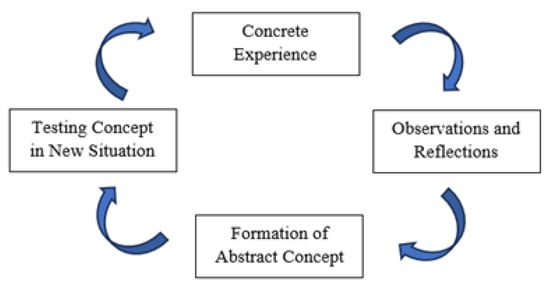
Figure 1
Open AccessArticle
Impact of Learning Analytics Guidance on Student Self-Regulated Learning Skills, Performance, and Satisfaction: A Mixed Methods Study
Educ. Sci. 2024, 14(1), 92; https://doi.org/10.3390/educsci14010092 - 15 Jan 2024
Abstract
Learning analytics (LA) involves collecting, processing, and visualizing big data to help teachers optimize learning conditions. Despite its contributions, LA has not yet been able to meet teachers’ needs because it does not provide sufficient actionable insights that emphasize more on analytics and
[...] Read more.
Learning analytics (LA) involves collecting, processing, and visualizing big data to help teachers optimize learning conditions. Despite its contributions, LA has not yet been able to meet teachers’ needs because it does not provide sufficient actionable insights that emphasize more on analytics and less on learning. Our work uses specific analytics for student guidance to evaluate an instructional design that focuses on LA agency between teachers and students. The research goal is to investigate whether the minimal and strong guidance provided by the LA learning approach has the same impact on student outcomes. The research questions are as follows “Does the LA-based minimal and strong guidance learning approach have the same impact on student performance and SRL skills? What are the students’ learning perceptions and satisfaction under LA-based guidance?” A mixed methods study was conducted at a university in which LA-based strong guidance was applied to the experimental group and minimal guidance was given to the control group. When strong guidance was applied, the results indicated increased final grades and SRL skills (metacognitive activities, time management, persistence, and help seeking). Furthermore, student satisfaction was high with LA-based guidance. Future research could adapt our study to nonformal education to provide nuanced insights into student outcomes and teachers’ perceptions.
Full article
(This article belongs to the Special Issue Advances in Technology-Enhanced Teaching and Learning)
►▼
Show Figures
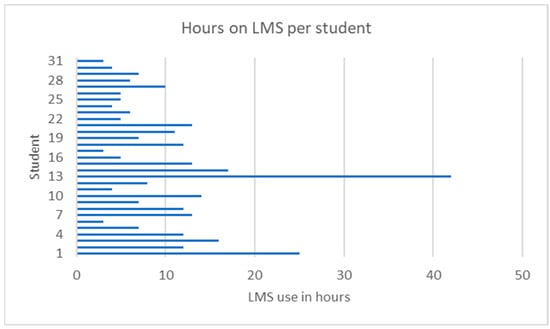
Figure 1
Open AccessArticle
A Quasi-Experimental Study on the Development of Creative Writing Skills in Primary School Students
Educ. Sci. 2024, 14(1), 91; https://doi.org/10.3390/educsci14010091 (registering DOI) - 15 Jan 2024
Abstract
The purpose of this research was to evaluate the impact of using an educational program on the development of creative writing skills in fourth-grade students. Creative writing is an important component of teaching, learning, and assessment at the level of primary education. The
[...] Read more.
The purpose of this research was to evaluate the impact of using an educational program on the development of creative writing skills in fourth-grade students. Creative writing is an important component of teaching, learning, and assessment at the level of primary education. The objectives of the study aimed to identify the general level of development of creative writing skills and establish any significant differences in the development of specific components of creative writing skills (narrative voice, characterization, mood and atmosphere, language and technical aspects of writing, dialogue, narration, setting, image and plot). A quasi-experimental design with intervention and control groups was used. A total of 146 students from 3 public school institutions in the city of Bacau, Romania, that include elementary grades participated in the study. The research group consisted of 73 students in the intervention group and 73 students in the control group. A paired-samples t test was used to compare the scores for two paired variables. The research results have shown that creative writing skills are developing in young school-age students. Also, it was found that there are significant differences in the students from the experimental group, compared to the students in the control group, at the level of the nine components of creative writing skills.
Full article
(This article belongs to the Section Language and Literacy Education)
►▼
Show Figures
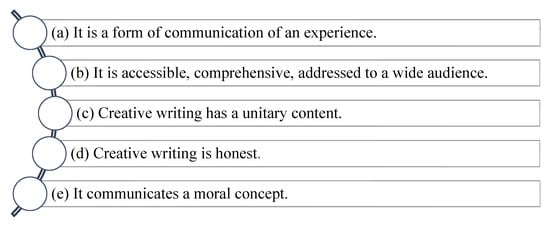
Figure 1
Open AccessArticle
Design Thinking in Higher Education Case Studies: Disciplinary Contrasts between Cultural Heritage and Language and Technology
Educ. Sci. 2024, 14(1), 90; https://doi.org/10.3390/educsci14010090 - 15 Jan 2024
Abstract
►▼
Show Figures
Design thinking is a set of cognitive, strategic, and practical procedures used in innovation. This article argues that this approach varies across disciplines. The contexts for this study are two higher educational frameworks where language and technology have different aims and target unique
[...] Read more.
Design thinking is a set of cognitive, strategic, and practical procedures used in innovation. This article argues that this approach varies across disciplines. The contexts for this study are two higher educational frameworks where language and technology have different aims and target unique skill sets and where transdisciplinarity is crucial. In our contrastive case study, we use a four-step model to compare two contexts. QUAN(qual) → QUAL mixed methodology is used which includes a quantitative and a qualitative comparative analysis. Context one takes place in an education faculty and focuses on developing cultural heritage. Context two takes place within a research project on linguistics and telecommunications involving linguistic analysis and bioelectrical measurement. Our findings indicate that there are clear and specific differences between the two domains when approaching design thinking. We observe that engineers seem to have a tangible final product in mind at each step of the process, while in the social sciences, the construct is more humanistic in its approach and works towards multiple tangible goals, including an examination of the existing needs in the community. The novelty of the study is the applied approach it takes in treating transdisciplinarity as a skill that is essential both in research as well as in the teaching–learning process.
Full article

Figure 1
Open AccessArticle
Supporting Learning Differences: Effects of Cognitive Training on Cognitive Abilities in a School-Based Sample
Educ. Sci. 2024, 14(1), 89; https://doi.org/10.3390/educsci14010089 - 15 Jan 2024
Abstract
A growing body of research demonstrates the effectiveness of computerized cognitive training (CCT) in building specific abilities (e.g., working memory) among school-age children. As a result, CCT is increasingly cited as a means to enhance and support students’ academic performance and school experience.
[...] Read more.
A growing body of research demonstrates the effectiveness of computerized cognitive training (CCT) in building specific abilities (e.g., working memory) among school-age children. As a result, CCT is increasingly cited as a means to enhance and support students’ academic performance and school experience. However, many studies exploring CCT as an intervention have done so outside of the school setting, limiting its potential impact with regard to students who may benefit from it but cannot access such supports. This project examined the efficacy of a CCT program implemented within the academic day for all students attending a private school. The findings showed that two CCT programs resulted in improvements in working memory, cognitive flexibility, and/or processing speed among third graders through sixth graders (N = 95). Furthermore, this project demonstrates a model for the effective integration of CCT into a school day without interrupting the academic curriculum. The present results have important implications for the current ideological shift in education that focuses on how to more broadly address students’ learning differences.
Full article
(This article belongs to the Section Education and Psychology)
Open AccessArticle
Competences Expected and Gained during the Teaching Practicum: Analysis of Three Competence Areas Affected during the Pandemic
Educ. Sci. 2024, 14(1), 88; https://doi.org/10.3390/educsci14010088 - 13 Jan 2024
Abstract
This study analyzes three competency areas promoted in the Practicum during the 2020–2021 and 2021–2022 academic years: pedagogical and didactic competences, coexistence and participation management and collaborative work. To this end, using a non-experimental design, data were collected from a sample of 725
[...] Read more.
This study analyzes three competency areas promoted in the Practicum during the 2020–2021 and 2021–2022 academic years: pedagogical and didactic competences, coexistence and participation management and collaborative work. To this end, using a non-experimental design, data were collected from a sample of 725 Education students from University of Salamanca with the aims of determining the students’ expectations about the Practicum prior to its development and of measuring its impact on the students during its development or the influence of the context imposed during the COVID-19 pandemic. The research was contextualized in two Practicum subjects included in the curricula of the bachelor’s degrees in Early Childhood/Primary Education at the University of Salamanca. Both degrees are taught at three different university centers, Ávila, Salamanca and Zamora. The results revealed the importance of the preparation of the students in their university training period with regard to the first competence area, together with the perceptions of the students about what they learnt in the competences of areas 2 and 3. Relevant conclusions were drawn about their learning expectations towards the second area and the problems caused by the pandemic in order to develop communication skills with students and families.
Full article
(This article belongs to the Section Teacher Education)
►▼
Show Figures
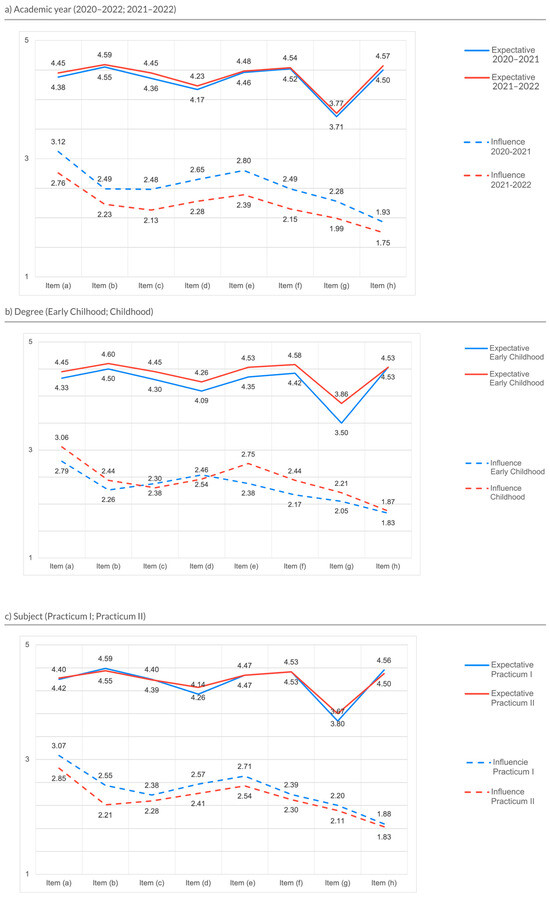
Figure 1
Open AccessArticle
Scouts’ Perspectives on Learning Experiences from a Pedagogical Innovation Scope
by
and
Educ. Sci. 2024, 14(1), 87; https://doi.org/10.3390/educsci14010087 - 13 Jan 2024
Abstract
The Portuguese educational system aims at nurturing the holistic development of individuals and societal progress, surpassing the mere transmission of curriculum-based knowledge. While considerable advancements have been made, the need for ongoing innovation and equal educational opportunities remains evident, so that all children
[...] Read more.
The Portuguese educational system aims at nurturing the holistic development of individuals and societal progress, surpassing the mere transmission of curriculum-based knowledge. While considerable advancements have been made, the need for ongoing innovation and equal educational opportunities remains evident, so that all children can have not only equal access to education, but also equal chances of success. This study investigates the largest Portuguese Scout movement, the CNE, exploring its organisational and pedagogical approaches, potentially applicable in formal education settings. This research surveyed participants aged 18–22, having completed approximately 12 years in the Scout movement. Data collection via focus group followed a semi-structured script, before a thorough content analysis was carried. Findings are organised as follows: Pedagogical organisation in learning cycles; Patrol system; The four stages of the Project Method; Characterization of the Scout Game and other learning process dimensions; Other competencies and values developed throughout the Scout learning course; and Comparisons with formal education contexts. The discourse of participants strongly suggests the Scout movement’s potential to inspire educational change, displaying consistent indicators of pedagogical innovation. The study advocates for further exploration of the CNE’s pedagogical functioning and its potential to serve as an inspiration for transformative changes in educational systems worldwide, as evidenced by the learners’ reflections.
Full article
(This article belongs to the Section Teacher Education)
Open AccessArticle
A Primer for Design and Systems Thinkers: A First-Year Engineering Course for Mindset Development
Educ. Sci. 2024, 14(1), 86; https://doi.org/10.3390/educsci14010086 - 13 Jan 2024
Abstract
Teaching students to think in complex systems and design is presumably intricate, creative, and nonlinear. However, due to the overwhelming number of standardized tools and frameworks, the process sometimes ends up being procedural and deductive. Conformity to rigid procedures loses the intention of
[...] Read more.
Teaching students to think in complex systems and design is presumably intricate, creative, and nonlinear. However, due to the overwhelming number of standardized tools and frameworks, the process sometimes ends up being procedural and deductive. Conformity to rigid procedures loses the intention of creative problem-solving towards tackling wicked problems. This paper proposes a project-based approach to instill the mindsets for those who aspire to be design and systems thinkers through a first-year engineering course. Using the ADDIE model, the instructional design was implemented in three modules focusing on design, systems, and integration for real-world applications. The instructional design was evaluated via course feedback surveys and focus-group interviews. Students indicated positive impacts on creative mindsets, habits of systems thinkers, and interdisciplinary awareness. However, negative comments about the course arrangement such as heavy workload and disconnection between topics were identified. Suggestions from students, challenges faced by the instructors, and recommended practices are discussed. In times of increasing need to reform higher education due to digitization and artificial intelligence, this study provides a timely investigation of a new project-based and mindset-focused pedagogy in design and systems thinking education.
Full article
(This article belongs to the Special Issue Project Based Learning and Engineering Education)
►▼
Show Figures
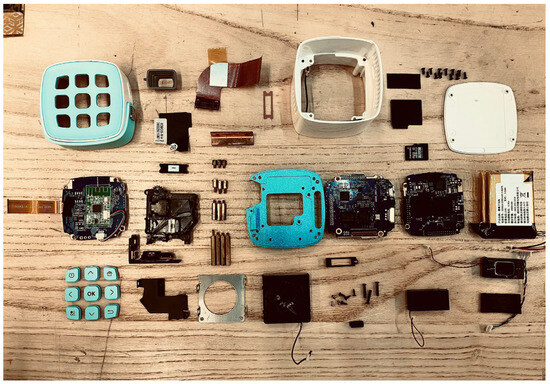
Figure 1
Open AccessArticle
Constructing in Minecraft in Primary School as a Boundary-Crossing Practice
by
and
Educ. Sci. 2024, 14(1), 85; https://doi.org/10.3390/educsci14010085 - 12 Jan 2024
Abstract
This study explores the educational adoption of Minecraft as a boundary-crossing practice in primary schools. Previous research indicates that Minecraft can facilitate connections between educational activities and students’ out-of-school experiences, promoting the development of skills such as creativity, innovation, and collaboration. Using a
[...] Read more.
This study explores the educational adoption of Minecraft as a boundary-crossing practice in primary schools. Previous research indicates that Minecraft can facilitate connections between educational activities and students’ out-of-school experiences, promoting the development of skills such as creativity, innovation, and collaboration. Using a qualitative approach, this study analyzed group interviews with 37 primary school students who participated in a Minecraft-based school project. The analysis focused on instances of boundary crossing associated with the Minecraft activity, allowing an examination of how various socio-cultural boundaries were overcome. The results suggest that educational activities in Minecraft can facilitate connections between school and out-of-school contexts. Moreover, the results indicate that Minecraft can serve as an interdisciplinary learning environment, enabling students to acquire knowledge and skills across diverse domains and disciplines. The analysis also underscores the significance of teachers’ design work in transforming the game into an educational resource. Overall, this article argues that the educational adoption of Minecraft has the potential to foster the construction of continuity between students’ different spheres of life, as well as prompting a reconsideration of students’ previous cultural classifications and social positions.
Full article
(This article belongs to the Special Issue Boundary Objects and Practices in Educational Contexts)
►▼
Show Figures
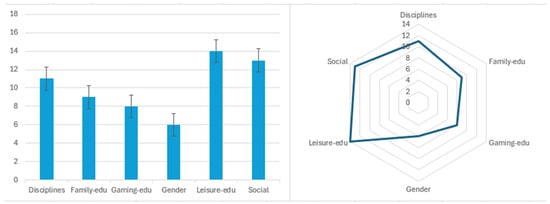
Figure 1
Open AccessArticle
Do Grandparents Contribute to Their Grandchildren’s Learning through Shared Leisure Activities?
by
, , , and
Educ. Sci. 2024, 14(1), 84; https://doi.org/10.3390/educsci14010084 - 12 Jan 2024
Abstract
Intergenerational leisure can be a tool to stimulate and reinforce the learning of primary school students. The aim of this study was to examine which leisure activities shared by grandparents and their grandchildren are carried out from the perception of intergenerational learning as
[...] Read more.
Intergenerational leisure can be a tool to stimulate and reinforce the learning of primary school students. The aim of this study was to examine which leisure activities shared by grandparents and their grandchildren are carried out from the perception of intergenerational learning as one of the main reasons for joint practice, and its link with the grandparents’ level of education. An ad hoc questionnaire was administered to 329 students aged 6 to 12 years in the north of Spain, and a descriptive study and inferential analysis of the data were carried out. The leisure activities that students highlight the most as experiences in which they perceive that by sharing them with their grandparents, they learn from them, are board games, artistic activities, caring for plants or gardens and reading. There are only significant differences in the learning perceived by primary school students depending on the level of education of their grandparents in caring for plants or vegetable gardens, as the grandparents of children aged 6 to 12 in the northern part of Spain are more able to teach their grandchildren to care for plants or vegetable gardens when their level of education is primary education. These four activities highlighted by the grandchildren as facilitators of knowledge are very interesting instruments to stimulate and reinforce the education of primary school students, so involving grandparents in their grandchildren’s education and taking advantage of their knowledge and experience, as well as their ability to stimulate their grandchildren, is a good strategy to turn free time into valuable leisure time.
Full article
(This article belongs to the Special Issue Leisure in Education: A Multi-Contextual Tool)
►▼
Show Figures
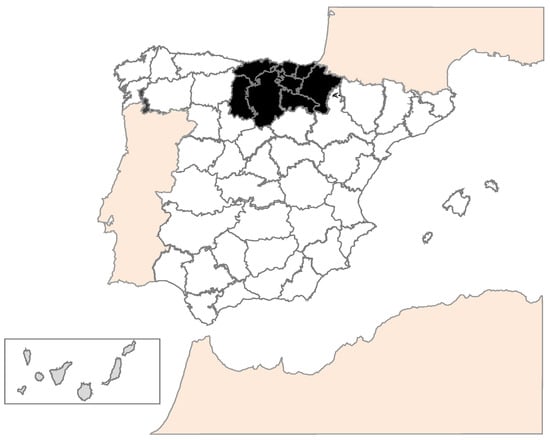
Figure 1
Open AccessArticle
Using Generative Artificial Intelligence Tools to Explain and Enhance Experiential Learning for Authentic Assessment
by
, , and
Educ. Sci. 2024, 14(1), 83; https://doi.org/10.3390/educsci14010083 - 12 Jan 2024
Abstract
The emergence of generative artificial intelligence (GenAI) requires innovative educational environments to leverage this technology effectively to address concerns like academic integrity, plagiarism, and others. Additionally, higher education needs effective pedagogies to achieve intended learning outcomes. This emphasizes the need to redesign active
[...] Read more.
The emergence of generative artificial intelligence (GenAI) requires innovative educational environments to leverage this technology effectively to address concerns like academic integrity, plagiarism, and others. Additionally, higher education needs effective pedagogies to achieve intended learning outcomes. This emphasizes the need to redesign active learning experiences in the GenAI era. Authentic assessment and experiential learning are two possible meaningful alternatives in this context. Accordingly, this article investigates how GenAI can enhance teaching and learning by constructively addressing study situations beyond conventional learning approaches and cultivating high-order skills and knowledge acquisition. This study employs thing ethnography to examine GenAI tools’ integration with authentic assessment and experiential learning and explore implementation alternatives. The results reveal insights into creating human-centered and GenAI-enhanced learning experiences within a constructive alignment. Specific examples are also provided to guide their implementation. Our contributions extend beyond the traditional use of GenAI tools as mere agents-to-write or agents-to-answer questions to become agents-to-support experiential learning for authentic assessment. These findings underscore the transformative role of GenAI tools in enhancing teaching and learning efficacy and effectiveness. The limitations in treating GenAI tools as subjects in thing ethnography are acknowledged, with potential for future implementation evaluation.
Full article
(This article belongs to the Section Technology Enhanced Education)
Open AccessReview
A Current Overview of the Use of Learning Analytics Dashboards
by
, , , , and
Educ. Sci. 2024, 14(1), 82; https://doi.org/10.3390/educsci14010082 - 11 Jan 2024
Abstract
The promise of Learning Analytics Dashboards in education is to collect, analyze, and visualize data with the ultimate ambition of improving students’ learning. Our overview of the latest systematic reviews on the topic shows a number of research trends: learning analytics research is
[...] Read more.
The promise of Learning Analytics Dashboards in education is to collect, analyze, and visualize data with the ultimate ambition of improving students’ learning. Our overview of the latest systematic reviews on the topic shows a number of research trends: learning analytics research is growing rapidly; it brings to the front inequality and inclusiveness measures; it reveals an unclear path to data ownership and privacy; it provides predictions which are not clearly translated into pedagogical actions; and the possibility of self-regulated learning and game-based learning are not capitalized upon. However, as learning analytics research progresses, greater opportunities lie ahead, and a better integration between information science and learning sciences can bring added value of learning analytics dashboards in education.
Full article
(This article belongs to the Special Issue New Trends in Educational Technology after the Pandemic)
►▼
Show Figures
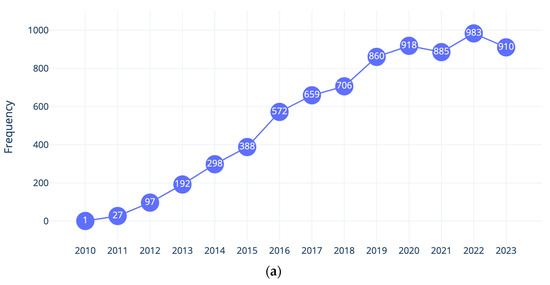
Figure 1
Open AccessArticle
Increasing Self-Concept and Decreasing Gender Stereotypes in STEM through Professional Development for Early Childhood Educators
by
, , , , and
Educ. Sci. 2024, 14(1), 81; https://doi.org/10.3390/educsci14010081 - 11 Jan 2024
Abstract
Starting early in life, children, especially girls, experience obstacles when it comes to developing an interest in STEM. Although early childhood (EC) educators face an important task in promoting girls (and boys) in STEM, they often face challenges in doing so. Therefore, it
[...] Read more.
Starting early in life, children, especially girls, experience obstacles when it comes to developing an interest in STEM. Although early childhood (EC) educators face an important task in promoting girls (and boys) in STEM, they often face challenges in doing so. Therefore, it is crucial for EC educators to cultivate positive attitudes, self-concepts, and STEM skills. To address these identified issues, a three-month professional development program was created for EC educators. This professional development program was evaluated using a pre–post design with a focus on the self-concept and gender stereotypes of EC educators. The program involved 30 female EC educators in evaluating these aspects. The statistical analyses show positive results in enhancing educators’ self-concepts and reducing gender stereotypes over the course of this professional development program. The results suggest the potential of the blended learning design in this professional development program and indicate that this program could serve as a promising model for future interventions.
Full article
(This article belongs to the Special Issue Sticking with STEM: Who Comes, Who Stays, Who Goes, and Why?)
►▼
Show Figures
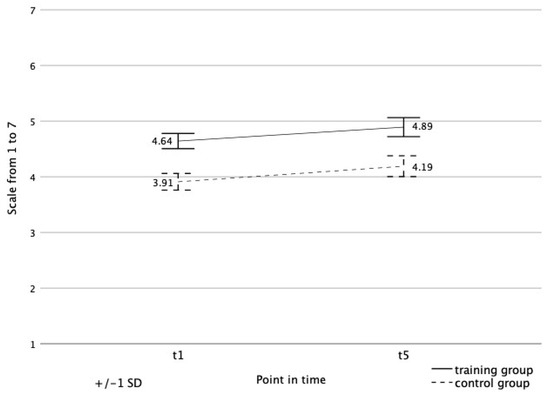
Figure 1
Open AccessArticle
Learning Sciences from the Past: Recovery, Study, and Cataloging of a Historical Natural History School Museum
by
and
Educ. Sci. 2024, 14(1), 80; https://doi.org/10.3390/educsci14010080 - 11 Jan 2024
Abstract
►▼
Show Figures
School–museum partnerships have gained considerable attention in the academic literature in recent decades. However, their role in enhancing science education is still an under-researched topic. This work reports on the outcomes of the recovery, study, cataloging, and valorization of the 18th century geo-mineralogical
[...] Read more.
School–museum partnerships have gained considerable attention in the academic literature in recent decades. However, their role in enhancing science education is still an under-researched topic. This work reports on the outcomes of the recovery, study, cataloging, and valorization of the 18th century geo-mineralogical collection belonging to the Collegio Nazareno, now housed at the Istituto San Giuseppe Calasanzio in Rome. The project, which was participated in by the students enrolled in the fourth- and fifth-grade high school classes, revealed rare specimens such as the mineralogical collection donated by the Holy Roman Emperor Joseph II (1741–1740) in 1785. Furthermore, the laboratory activities organized from the stored samples highlighted educational approaches that helped students to cope with the complexities of authentic scientific work and cultural related issues. This work thus offers significant insights into the importance of natural history school museums as useful (and oft-forgotten) learning tools in science education.
Full article
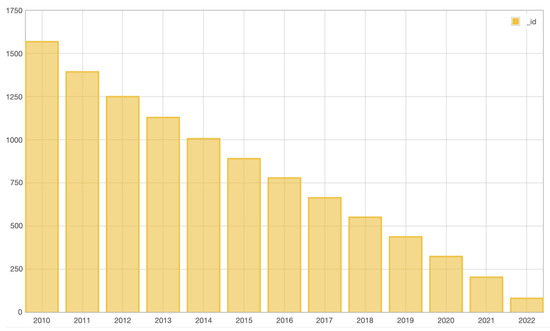
Figure 1
Open AccessArticle
An Exploration of How Multimodally Designed Teaching and the Creation of Digital Animations can Contribute to Six-Year-Olds’ Meaning Making in Chemistry
Educ. Sci. 2024, 14(1), 79; https://doi.org/10.3390/educsci14010079 - 10 Jan 2024
Abstract
Previous research shows that pupils’ participation in educational activities increases when they are allowed to use several forms of expression. Furthermore, digital media have become increasingly prominent as “carriers” of meaning in chemistry education. Based on that, this paper aims to explore ‘what
[...] Read more.
Previous research shows that pupils’ participation in educational activities increases when they are allowed to use several forms of expression. Furthermore, digital media have become increasingly prominent as “carriers” of meaning in chemistry education. Based on that, this paper aims to explore ‘what is happening’ and ‘what is possible’ when six-year-old pupils participate in multimodally designed learning activities and create digital animations of water molecules and phase changes of water. This study is qualitative and draws on the frameworks of social semiotics and Designs for Learning, DfL, where teaching and learning are seen as a multimodal design. The Learning Design Sequence model, developed within DfL is used as a basis for the lesson design and as an analytical tool. The analyzed data were generated by filming when pupils participated in multimodal learning activities, created digital animations, and participated in meta-reflective discussions regarding their digital animations. The main findings are that multimodally designed lessons can increase pupils’ meaning making in chemistry, that the creation of digital animations may both increase pupils’ participation and support their meaning making, and that meta-reflection of pupils’ representations is an important part of the lesson design.
Full article
(This article belongs to the Special Issue The Use of Multiple Resources in Teaching and Learning Science)
►▼
Show Figures
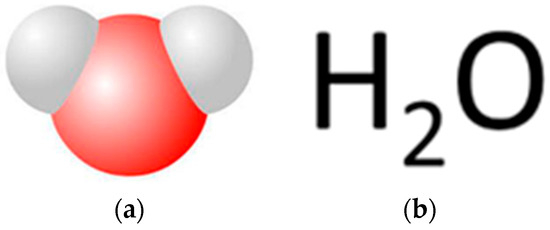
Figure 1
Open AccessArticle
Factors Associated with Resilience among Thai Nursing Students in the Context of Clinical Education: A Cross-sectional Study
by
, , , , and
Educ. Sci. 2024, 14(1), 78; https://doi.org/10.3390/educsci14010078 - 09 Jan 2024
Abstract
Resilience aids nursing students in dealing with adversities during their nursing education. This study examined the relationship between nursing students’ resilience and relevant variables in the context of clinical education. Methods: A cross-sectional study was conducted to collect data from 319 undergraduate nursing
[...] Read more.
Resilience aids nursing students in dealing with adversities during their nursing education. This study examined the relationship between nursing students’ resilience and relevant variables in the context of clinical education. Methods: A cross-sectional study was conducted to collect data from 319 undergraduate nursing students in Northeast Thailand. The Connor–Davidson Resilience Scale, the Multidimensional Scale of Perceived Social Support, the Learning Experience Scale or the Personal Responsibility Orientation to Self-Direction in Learning Scale, and the Stressors in Nursing Students scale were administered. A multiple regression analysis was performed for factors presumed to be associated with resilience. Results reported that Thai nursing students’ average resilience score was 71.79 ± 16.33. Multiple regression analysis indicated factors associated with resilience, in which social support (β = 0.354, p < 0.001, 95%CI: 0.240 to 0.469) and self-directed learning (β = 0.787, p < 0.001, 95%CI: 0.606 to 0.968) showed a positive association, while stress (β = −0.083, p = 0.025, 95%CI: −0.083 to −0.006) had a negative association. The final model accounted for 43.4% of the variance in the resilience score. In conclusion, self-directed learning, social support, and perceived stress among nursing students during clinical education are associated with their resilience.
Full article
(This article belongs to the Section Higher Education)
Open AccessArticle
Designing for Social Justice: A Decolonial Exploration of How to Develop EdTech for Refugees
by
, , , , , , , and
Educ. Sci. 2024, 14(1), 77; https://doi.org/10.3390/educsci14010077 - 09 Jan 2024
Abstract
This paper reflects on the lived experiences of young refugees located in Pakistan and Rwanda when interacting with education technology (EdTech) during and following displacement. We offer a broad decolonial commentary on issues related to the design and development of EdTech initiatives for
[...] Read more.
This paper reflects on the lived experiences of young refugees located in Pakistan and Rwanda when interacting with education technology (EdTech) during and following displacement. We offer a broad decolonial commentary on issues related to the design and development of EdTech initiatives for refugees, noting some of the historical trends prevalent in the education and emergencies sector. We are guided by questions such as: Why EdTech to start with? Who designs the products? Where are they designed? How are they designed? And, which power dynamics are at play during the design process? From this, we draw on qualitative data generated through three focus groups, where we explore young refugees’ experiences of EdTech. The focus group included a creative element inviting participants to imagine what a liberatory EdTech practice would look like. We aim to illustrate the practical implications of design choices taken by EdTech developers and, from this, recommend a set of justice-centred design principles for developers of EdTech in refugee contexts. These insights relate specifically to the experiences of refugees in Rwanda and Pakistan, though we also discuss the implications of these learnings for other contexts.
Full article
(This article belongs to the Special Issue Decolonising Educational Technology)
►▼
Show Figures
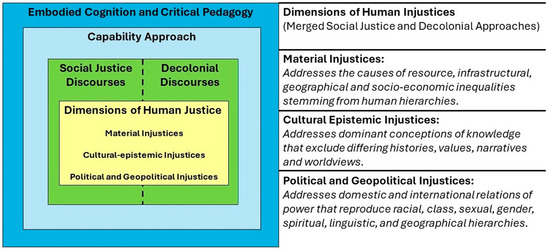
Figure 1
Open AccessArticle
A Gender Bias in Curriculum-Based Measurement across Content Domains: Insights from a German Study
Educ. Sci. 2024, 14(1), 76; https://doi.org/10.3390/educsci14010076 - 09 Jan 2024
Abstract
By immediately responding to achievement progress data, teachers can improve students’ performance by using curriculum-based measurement. However, there are studies showing that teachers are prone to make biased judgments about the students providing the data. The present investigation experimentally examined whether pre-service teachers
[...] Read more.
By immediately responding to achievement progress data, teachers can improve students’ performance by using curriculum-based measurement. However, there are studies showing that teachers are prone to make biased judgments about the students providing the data. The present investigation experimentally examined whether pre-service teachers in Germany were biased by the use of gender stereotypes when judging students’ achievement derived from progress data. N = 100 pre-service teachers received graphs that depicted the development of either oral reading fluency or math achievement of girls and boys over a time interval of 11 weeks. The results obtained confirmed the hypotheses partially. The participants did not favor girls over boys on average. However, they judged achievement in reading to be higher for girls than for boys, and math achievement to be higher for boys than for girls. The results suggest that gender stereotypes (boys are good at math, girls are good at reading) are still prevalent in pre-service teachers.
Full article
(This article belongs to the Section Education and Psychology)
►▼
Show Figures
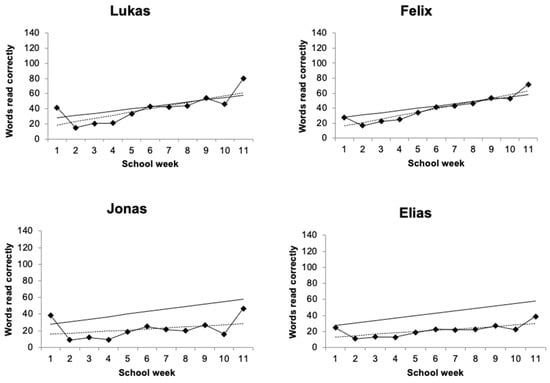
Figure 1
Open AccessArticle
Three Approaches to Using Mixed Reality Simulations for Teacher Preparation and Recruitment of Future Teachers
Educ. Sci. 2024, 14(1), 75; https://doi.org/10.3390/educsci14010075 - 08 Jan 2024
Abstract
Mixed reality simulations have versatility in both the preparation as well as the recruitment of future teachers. We describe three approaches that have led to successful outcomes for general and special education preservice teachers, as well as in the recruitment of future teacher
[...] Read more.
Mixed reality simulations have versatility in both the preparation as well as the recruitment of future teachers. We describe three approaches that have led to successful outcomes for general and special education preservice teachers, as well as in the recruitment of future teacher candidates from the high school level. First, we explored the use of TeachLivE™ to enhance special education teacher candidates’ behavior observation skills when conducting functional behavior assessments. Second, we studied the impact of different simulation methods on early childhood candidates’ preparedness to communicate with parents and caregivers about sensitive topics. Finally, we utilized TeachLivE™ as a recruitment tool to engage current high-achieving high school students in the teaching and reflection process as part of their on-campus dual credit program. In all cases, candidates and students valued the simulation experiences, recognizing the opportunity to deliver instruction in supportive environments with immediate feedback, coaching, and practice opportunities.
Full article
(This article belongs to the Special Issue The Use of Mixed Reality Simulations in Teacher Education)

Journal Menu
► ▼ Journal Menu-
- Education Sciences Home
- Aims & Scope
- Editorial Board
- Topical Advisory Panel
- Instructions for Authors
- Special Issues
- Topics
- Sections & Collections
- Article Processing Charge
- Indexing & Archiving
- Editor’s Choice Articles
- Most Cited & Viewed
- Journal Statistics
- Journal History
- Journal Awards
- Society Collaborations
- Conferences
- Editorial Office
Journal Browser
► ▼ Journal BrowserHighly Accessed Articles
Latest Books
E-Mail Alert
News
Topics
Topic in
Education Sciences, Languages, Religions, Sustainability
From Education and Humanities to Improve Knowledge, Society and the Digital Transformation
Topic Editors: Rosabel Roig-Vila, Jordi M. Antolí-Martínez, Antonio Cortijo, Vicent Martines, Santiago Mengual Andrés, Elena Sánchez-López, Fabrizio Manuel Sirignano, Alexander López PadrónDeadline: 7 March 2024
Topic in
Administrative Sciences, Education Sciences, Societies, Sustainability
Embedding Sustainability in Organizations through Climate, Culture and Leadership
Topic Editors: Sandro Serpa, Maria José SáDeadline: 31 May 2024
Topic in
Education Sciences, Entropy, JAL, Societies, Sustainability
Sustainability in Aging and Depopulation Societies
Topic Editors: Shiro Horiuchi, Gregor Wolbring, Takeshi MatsudaDeadline: 15 June 2024
Topic in
Behavioral Sciences, Education Sciences, EJIHPE, Social Sciences, Sustainability
Education and Learning in the Context of the New Normal: Sustainable Development and the Path to Sustainability
Topic Editors: Kittisak Jermsittiparsert, Ismail Suardi Wekke, Oytun Sozudogru, Jamaluddin AhmadDeadline: 30 June 2024

Conferences
Special Issues
Special Issue in
Education Sciences
Digital Learning: Exploring the Use of Educational Technology in Educational Environments
Guest Editor: Robert Otto DavisDeadline: 20 January 2024
Special Issue in
Education Sciences
Leadership of/in Early Years—Primary Education Sector: An International Perspective
Guest Editor: Krishan SoodDeadline: 31 January 2024
Special Issue in
Education Sciences
Teacher Education for Islamic Education and Schooling
Guest Editors: Nadeem Memon, Mohamad AbdallaDeadline: 15 February 2024
Special Issue in
Education Sciences
Special Educational Needs and Rights to Education in School and University from a Cross-National Point of View: A Look in a Complex World
Guest Editors: Donatella Petretto, Carmelo Masala, Rita PiliaDeadline: 29 February 2024
Topical Collections
Topical Collection in
Education Sciences
Massive Open Online Courses
Collection Editor: Ebba Ossiannilsson
Topical Collection in
Education Sciences
Trends and Challenges in Higher Education
Collection Editors: Paul Barach, Donald A. Donahue












